1 Basic concepts of animal structure
The
adjectives of animal anatomy - essential vocabulary.
Points or parts of the animal body.
From molecules to meat - the range in size and complexity.
Farm animals versus other animals - farm animals in a zoological
context.
1.1 Adjectives of position
A number of
anatomical terms are needed to describe the relative positions of
structures
within the body. Study
hint: it is absolutely
essential to know and understand these terms.
-
Anterior = towards the head
-
Posterior = towards the tail
-
Dorsal = towards the upper part or back of the
standing animal
-
Ventral = towards the lower part or belly of the
standing animal
-
Medial = towards the midline plane that separates
right and left sides of
the body
-
Lateral = towards the sides of a standing animal
-
Proximal = towards the body in a limb of the animal
-
Distal = away from the body in a limb of the animal
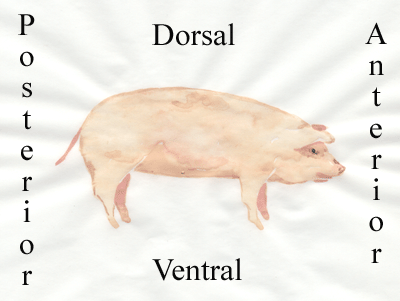
1.2 Types of farm animals
Species is plural. One
species - two species. The singular, specie, has no connection to
farm animals or science at all. Specie is small change - dimes
and pennies.
Adjectives describing
species. The names
for different types of farm animals also may be unfamiliar to some
readers. The
adjectives that relate to cattle, sheep and pigs are bovine, ovine and porcine,
respectively. The first of these may be used elliptically so that
bovine may
stand for bovine animal.
Male versus female. For cattle,
sheep, pigs and poultry, the sire or
father is called a bull, a ram, a boar or a cock (tom in turkeys),
respectively, while the dam or mother is called a cow, a ewe, a sow or
a hen,
respectively.
Immature animals. A heifer is
an immature female bovine, and a gilt is an immature
female pig. A hogget is a yearling sheep.
Neonates. The neonates or
new‑born of cattle,
sheep and pigs are called calves, lambs or piglets, respectively. For
pigs, the
process of birth or parturition is called farrowing. Newly hatched
chickens,
turkeys, ducks and geese are called chicks, poults, ducklings or
goslings,
respectively.
Castrates. For cattle, sheep,
pigs and poultry, a castrated male is called a
steer, a wether, a barrow or a capon, respectively.
1.3 Points of a pig
Canadian students raised on a farm are not going to need this
- but many of our students come from the big city or have English as a
second language.
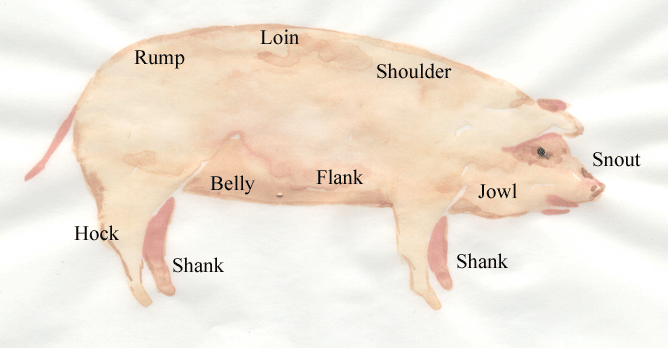
1.4 Points of a beef animal

1.5 Points of a lamb
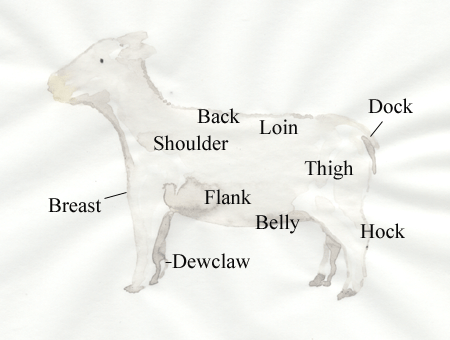
1.6 Range in size & complexity
The live animal is slaughtered to produce a
carcass composed of edible meat (muscle), fat (adipose tissue) and
bone. The viscera (guts) are removed at slaughter. Muscle, fat and bone
are tissues - this describes their composition rather than their
position. Individual muscles and bones have names, whereas fat is
described as subcutaneous (under the skin), visceral (around the guts),
intermuscular (between muscles) and intramuscular (within muscles).
Study hint: do not confuse the two
prefixes 'intra-' and 'extra-'. Intra- means within. Inter-
means between.
Tissues have distinct functions. Muscle tissue contracts to
create movement. Adipose tissue stores energy and provides thermal and
mechanical insulation. Bone provides support.
All tissues are composed of cells, and many are held together by
fibres. Cells and fibres are often surrounded by a back-ground
material or matrix. Tissues are spread throughout the body and occur at
many different locations.
Organs are distinct anatomical structures with one or more functions.
The heart pumps blood through the vascular system. The lungs add
oxygen and remove carbon dioxide from the blood. Organs usually contain
several types of tissue - the heart, for example, is dominated by
cardiac muscle tissue but also contains vascular tissue (its own blood
supply), nervous tissue (to control heart rate), and connective tissue
(forming valves, holding the heart together and isolating the heart in
the thoracic cavity).
Tissues and organs are mostly visible by eye - without a
microscope. Individual cells can only be seen with a microscope.
Inside cells are organelles - specific parts of the cell with special
functions. For example, inside muscle fibres (the fibre is a
giant cell with many nuclei), are organelles called myofibrils
responsible for contraction. The cell nucleus contains genetic
information coded in DNA (deoxyribonucleic acid).
Myofibrils are very important in this course - because meat is very
important in animal agriculture. Meat is either the primary
product (beef, pork, lamb and poultry meat) or the terminal product
(dairy cows, wool sheep and spent laying hens) of animal agriculture.
Myofibrils are composed of very large proteins just individually
visible at the highest magnifications of electron microscopy.
1.7 Animal classification
The principles of animal classification are fairly simple -
but the
details are very complex. The animal kingdom is divided into a number
of phyla (singular, phylum). The word is taken from the Greek
word, phylon, meaning a race or tribe. Here are some major phyla.
- CILIOPHORA, this includes the cilated protozoa (single-celled
animals propelled by numerous, small whip-like structures on their
surface). Ciliates are important symbionts
in the rumen of our farm animals. Symbionts are different types of
animals co-operating together.
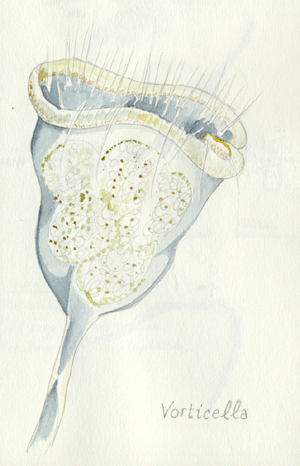
- PORIFERA, this include the sponges which are intermediate
between protozoa
(single-celled animals) and metazoa
(many-celled animals).

- CNIDARIA, this includes jellyfish, sea anemones and corals which
are composed of two layers of cells.
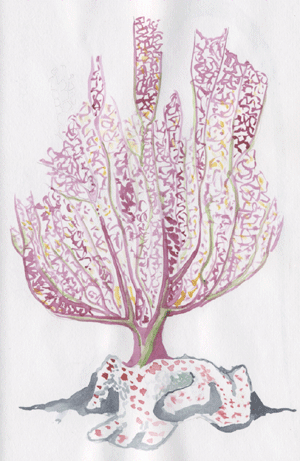 Inside is the endoderm forming a gut with a single
opening as both mouth and anus. Outside is the ectoderm forming a surface layer
with sensory organs. Ecto-
means outside. Endo-
means inside. Derma means
skin. Animals with just these two layers are called diploblastic. Diploblastic is
derived from two Greek words translated as double-bud. Why?
Because many different structures and tissues will bud off from these
primitive layers of cells as animals evolve and develop. Evolutionary
development is called phylogeny,
as compared with the individual development of one animal, which is
call ontogeny.
Inside is the endoderm forming a gut with a single
opening as both mouth and anus. Outside is the ectoderm forming a surface layer
with sensory organs. Ecto-
means outside. Endo-
means inside. Derma means
skin. Animals with just these two layers are called diploblastic. Diploblastic is
derived from two Greek words translated as double-bud. Why?
Because many different structures and tissues will bud off from these
primitive layers of cells as animals evolve and develop. Evolutionary
development is called phylogeny,
as compared with the individual development of one animal, which is
call ontogeny.
- PLATYHELMINTHES, this includes important parasites of farm
animals such as liver flukes and tapeworms. They have a third body
layer - the mesoderm between
the ectoderm and endoderm - but they still have only one opening to the
gut.

- NEMATODA, this includes the Trichinella
worms occasionally found in pork. The worms are triploblastic and have
both a mouth and anus. Everything following in this list is
triplobastic with both mouth and anus.
- ANNELIDA, this includes the familiar segmented worms in the
garden and at the seaside.
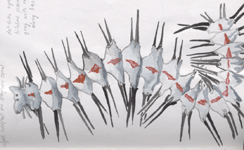
- ARTHROPODA, this includes many important animals such as insects,
centipedes, spiders, crabs, lobsters and shrimps. They all have an
external skeleton and jointed legs.
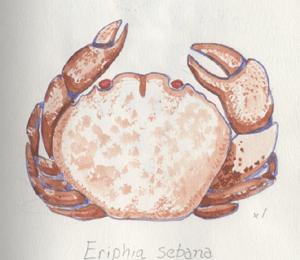
- MOLLUSCA, this includes all the snails, slugs, clams, squid and
octopus.

- ********************************
- ECHINODERMATA, this includes star fishes, sea cucumbers, sea
urchins and sea lilies. They are all marine animals with an external
skeleton and five-part radial symmetry.
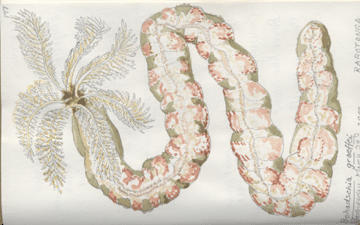
- CHORDATA, this includes fish, amphibians, reptiles, birds and
mammals.
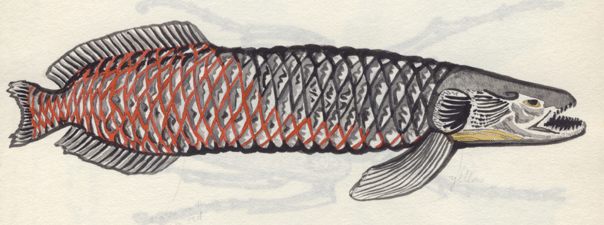
Each phylum is divided into classes, and classes are further
subdivided into orders. Phylum Chordata contains the two classes which
interest us here.
- AVES, includes Order Galliformes (chickens, turkeys, and
game birds) and Order Anseriformes (ducks and geese).
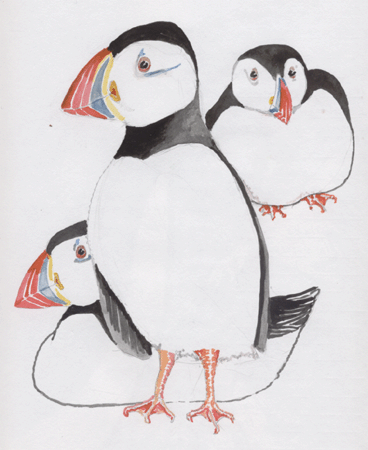
- MAMMALIA, includes cattle, sheep and pigs in the Order
Artiodactyla. These animals stand on feet with an even number of digits
- 2 for cattle and sheep, 4 for the pig.

There is something important in the way animals developed two
openings to the gut (mouth + anus). If the original single opening
became the mouth, they are called protostomes
(first mouth). But if the original single opening became the anus, so
the mouth was developed from a second, new opening they are called deuterostomes (second mouth). All
the phyla with both mouth and anus above the line (******) in the list
are protostomes, while
the two phyla below the line are both deuterostomes. It may be
difficult to grasp we and our farm animals evolved from radially
symmetrical animals, but their remote ancestors looked a little
like ancient fossil fish with a heavy armoured skull propelled by a
flexible tail. I believe it. You can believe what you want.
Further information
R.C. Brusca & G.J. Brusca. (1990). Invertebrates. Sinauer Associates,
Sunderland, Massachusetts. This is the best invertebrate zoology text I
have ever used. Big and heavy - something to browse for real
details. There is a later edition.
H. Gee. (1996). Before the
Backbone. Chapman & Hall, London. This is a
brilliant exposition of a very complex field. It explains likely
routes for the origin of chordates from invertebrates. Easy to
read the whole book.
Trivia
Zoological illustrations - water
colours of common live animals plus a museum rarity.
Ciliophora. This Vorticella
, a ciliophoran with a stalk,
was under my deck on the Mad River at Singhampton, Ontario.
Porifera. Spheciospongia
vesparium, the common loggerhead sponge was at Cayo Coco, Cuba.
Cnidaria. Gorgonia flabellum,
venus sea fan. Playa Esmeralda, Cuba.
Platyhelminthes. Planaria,
in 3 moving poses. Grand Mannan Island, New Brunswick.
Annelida. Nephtys,
red-lined worm. Playa Esmeralda, Cuba.
Arthropoda. Eriphia
sebana, red-eyed crab, on the Great Barrier Reef,
off Heron Island, Australia.
Mollusca. Octopus
briareus in a rockpool on the Island of Fernando de
Noronha off the coast of Brazil.
Echinodermata. Bohadschia
graeffei, sea cucumber, on the reef off Rarotonga in the Cook
Islands.
Chordata. Arapaima gigas,
Sakurajima Museum Japan.
Aves. Just one puffin in three poses, Fratercula artica, on
Skomer Island, UK.
Mammalia. Aepyceros melampus,
Kruger Park, South Africa.


 Inside is the endoderm forming a gut with a single
opening as both mouth and anus. Outside is the ectoderm forming a surface layer
with sensory organs. Ecto-
means outside. Endo-
means inside. Derma means
skin. Animals with just these two layers are called diploblastic. Diploblastic is
derived from two Greek words translated as double-bud. Why?
Because many different structures and tissues will bud off from these
primitive layers of cells as animals evolve and develop. Evolutionary
development is called phylogeny,
as compared with the individual development of one animal, which is
call ontogeny.
Inside is the endoderm forming a gut with a single
opening as both mouth and anus. Outside is the ectoderm forming a surface layer
with sensory organs. Ecto-
means outside. Endo-
means inside. Derma means
skin. Animals with just these two layers are called diploblastic. Diploblastic is
derived from two Greek words translated as double-bud. Why?
Because many different structures and tissues will bud off from these
primitive layers of cells as animals evolve and develop. Evolutionary
development is called phylogeny,
as compared with the individual development of one animal, which is
call ontogeny.










